Journey to the Planets: A Guide to the Solar System
Exploring our solar system
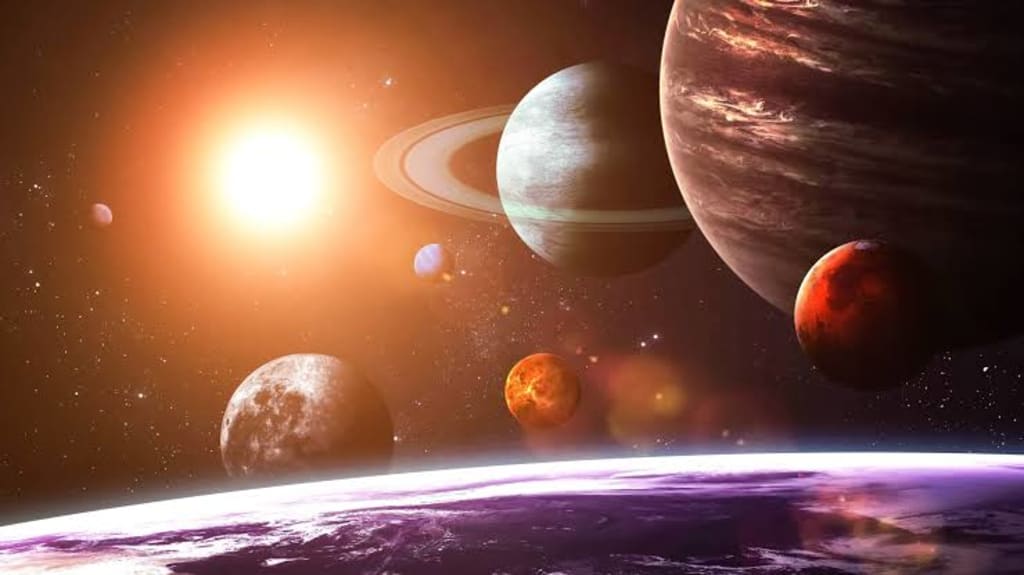
Solar system

The Solar System formed 4.6 billion years ago from a cloud of gas and dust, which collapsed and flattened into a disk-shaped region known as the solar nebula. Within this disk, the Sun formed in the center and the planets formed from the remnants of the solar nebula through a process known as accretion.
The inner, rocky planets (Mercury, Venus, Earth, and Mars) are small and have solid surfaces, while the outer, gas giant planets (Jupiter, Saturn, Uranus, and Neptune) are much larger and have massive atmospheres. The dwarf planets and smaller objects mostly orbit the Sun in a region known as the Kuiper Belt, beyond the orbit of Neptune.
Sun
The Sun is a star located at the center of the Solar System. It is a nearly perfect spherical ball of hot plasma, with internal convective motion that generates a magnetic field via a dynamo process. It is by far the most important source of energy for life on Earth.
Its diameter is about 1.39 million kilometers, or 109 times that of Earth, and its mass is about 330,000 times that of Earth, accounting for about 99.86% of the total mass of the Solar System
The Sun is classified as a G-type main-sequence star, and is informally referred to as a yellow dwarf. It formed approximately 4.6 billion years ago from the gravitational collapse of matter within a large molecular cloud.
Mercury
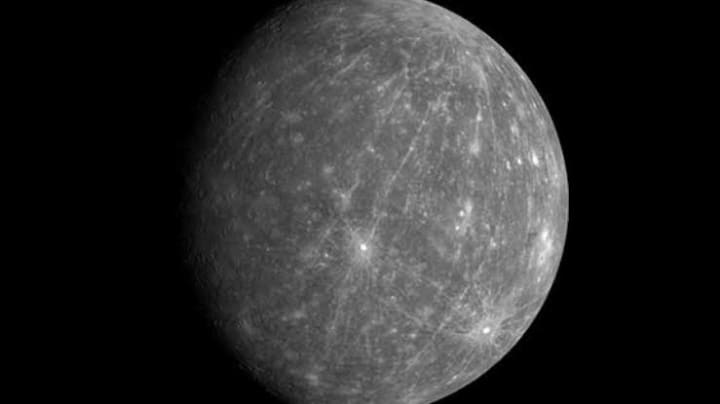
Mercury is the smallest planet in our solar system and the closest planet to the sun. It has a rocky surface and a thin atmosphere. It rotates slowly on its axis, taking almost 59 Earth days to complete
a single rotation. A day on Mercury (the time it takes for the planet to rotate once on its axis) lasts 176 Earth days. Mercury has a very small axial tilt, which means that there is very little variation in temperature between its poles and equator.
The average surface temperature on Mercury is 800 degrees Fahrenheit (430 degrees Celsius), making it one of the hottest planets in our solar system. Despite its close proximity to the sun, however, some parts of Mercury can be extremely cold, with temperatures dropping to minus 290 degrees Fahrenheit (minus 180 degrees Celsius).
Venus
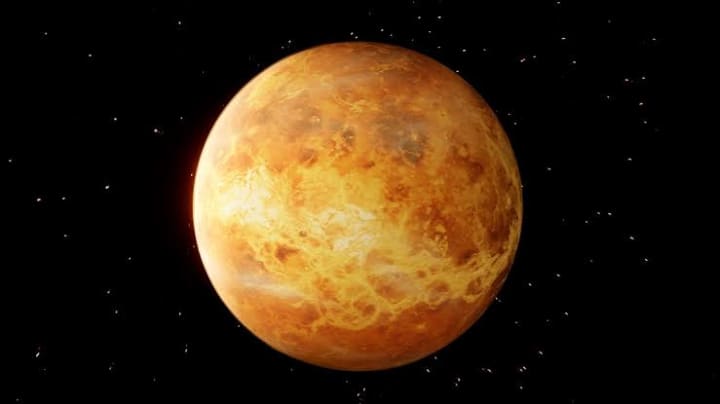
Venus is the second planet from the sun and the sixth largest planet in our solar system. It is sometimes referred to as the Earth's sister planet because of its similar size, mass, and composition. However, Venus has a very different environment and climate.
The surface of Venus is covered in a thick atmosphere composed mostly of carbon dioxide, with clouds of sulfuric acid. This creates a greenhouse effect that traps heat and results in surface temperatures that are hot enough to melt lead, with an average temperature of over 800 degrees Fahrenheit (430 degrees Celsius)
Venus rotates slowly in the opposite direction of most planets, meaning that its sun rises in the west and sets in the east. It also has a slow axial rotation, taking 243 Earth days to complete one rotation on its axis.
Venus has no moons or rings and does not have a strong magnetic field. Despite its inhospitable environment, Venus remains an object of scientific study, with several missions planned or underway to learn more about its history, atmosphere, and potential for past or present life.
Earth
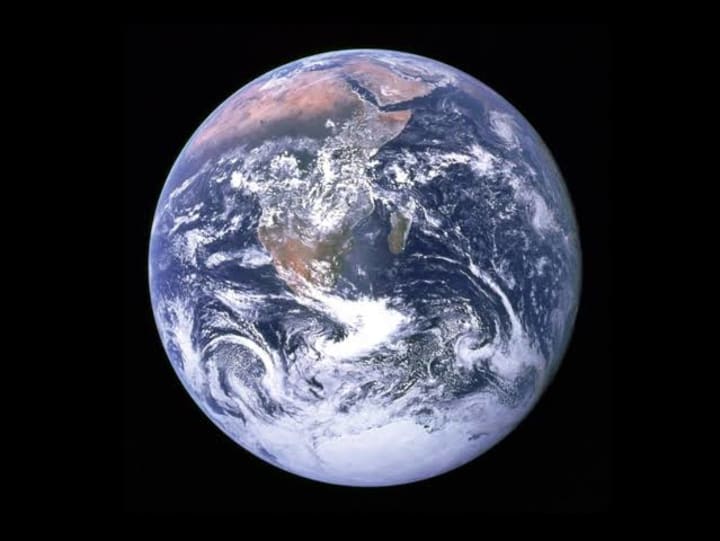
Earth is the third planet from the sun and the only known planet to harbor life. It is a terrestrial planet with a diverse environment, including oceans, forests, deserts, and frozen tundras.
The surface of Earth is divided into several large plates that move and interact, causing earthquakes, volcanic eruptions, and the creation of mountain ranges.
Earth has a strong magnetic field that protects the planet from harmful solar and cosmic radiation, and it has a moderate axial tilt that produces seasonal variations in weather patterns.
The atmosphere of Earth is composed primarily of nitrogen and oxygen, and it helps regulate the temperature and protects the planet from meteor impacts.
Earth has a single large moon, which is the fifth largest moon in the solar system and has a significant impact on the planet's tides and rotational stability. Earth has a diverse array of life forms, including plants, animals, and microorganisms, and its climate and environment have supported the evolution of complex ecosystems and civilizations.
Human activity has had a significant impact on the environment and climate of Earth, and ongoing efforts are underway to address the challenges posed by climate change and preserve the planet for future generations.
Mars
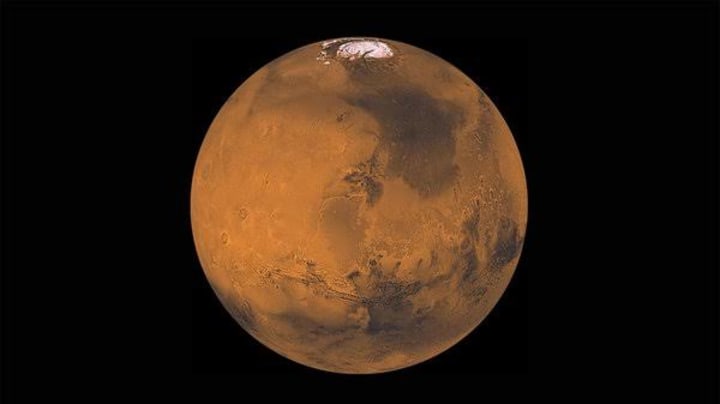
Mars is the fourth planet from the sun and is often referred to as the "Red Planet" because of its reddish appearance in the night sky. Mars is a terrestrial planet with a thin atmosphere and a surface marked by numerous impact craters, valleys, and mountains.
Mars has a very thin atmosphere, which does not provide enough protection from the solar wind and cosmic radiation. As a result, the surface of Mars is bombarded by high-energy particles and is covered in a layer of fine dust.
Mars has polar ice caps composed of frozen carbon dioxide and water, and it has evidence of past liquid water on its surface, including dried-up riverbeds and large underground reservoirs.
Mars has two small moons, Phobos and Deimos, which are thought to be captured asteroids. Mars has a weaker magnetic field than Earth and does not have a strong protective shield, making it a harsh and hostile environment for life as we know it.
Despite these challenges, Mars remains a subject of scientific study and exploration, with several missions underway or planned to study the planet's geology, climate, and potential for past or present life.
Mars is also considered a potential destination for future human exploration and colonization due to its proximity to Earth and similarities to our own planet.
Jubiter

Jupiter is the fifth planet from the sun and is the largest planet in our solar system. It is a gas giant, composed mainly of hydrogen and helium, and it has a massive atmosphere with colorful clouds and storms, including the famous Great Red Spot.
Jupiter has a very strong magnetic field and is surrounded by a system of faint rings and more than 79 moons, the largest of which is Ganymede. Ganymede is the largest moon in the solar system and is even larger than the planet Mercury.
Jupiter has a fast rotation, completing one rotation on its axis in just under 10 hours, and it has a very pronounced axial tilt, which causes significant variations in its atmospheric patterns. Despite its size and mass, Jupiter does not have a solid surface, and its atmosphere gradually transitions into the interior of the planet.
Jupiter plays a key role in our solar system, serving as a gravitational anchor for the asteroid belt and shaping the orbits of the outer planets. It has also played a significant role in our understanding of the formation and evolution of our solar system, and continues to be a subject of scientific study and exploration.
Saturn
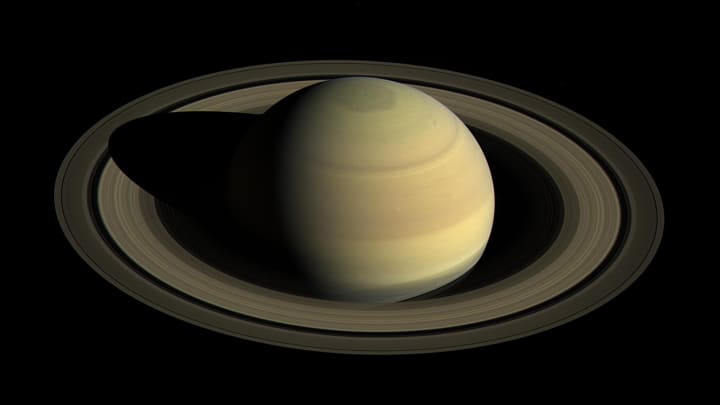
Saturn is the sixth planet from the sun and is the second largest planet in the solar system. Like Jupiter, Saturn is a gas giant, composed primarily of hydrogen and helium, and it has a massive atmosphere with colorful clouds and storms.
Saturn has a system of rings, which are the most extensive and visually stunning of any planet in the solar system. The rings are composed of countless ice particles, ranging in size from tiny grains to massive chunks, and they are thought to be the remnants of a shattered moon or captured comets.
Saturn has more than 60 moons, the largest of which is Titan, a moon with a thick atmosphere and evidence of liquid methane and ethane on its surface. Saturn has a slower rotation than Jupiter, completing one rotation in just under 11 hours, and its axial tilt is more moderate.
Saturn is a subject of scientific study and exploration, and several missions have been launched to study the planet, its moons, and rings. Saturn has provided important insights into the formation and evolution of our solar system and continues to be a source of wonder and discovery for scientists and the general public alike.
Uranus

Uranus is the seventh planet from the sun and the third largest in our solar system. It has an atmosphere that is composed primarily of hydrogen and helium, with trace amounts of methane that give it a blue-green color. Uranus has 27 known moons and a system of faint rings.
It rotates on its side, with an axial tilt of 97.77 degrees, meaning it rotates almost parallel to the plane of its orbit around the sun. Uranus takes 84 Earth years to complete one orbit around the sun and 17.24 Earth hours to complete one rotation on its axis.
Neptune
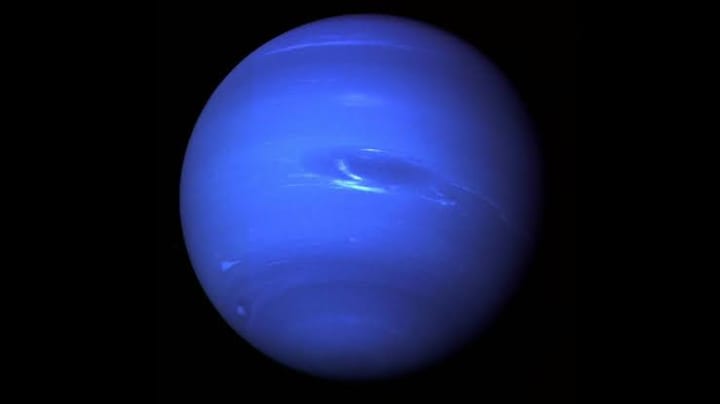
Neptune is the eighth planet from the sun and the fourth largest in our solar system. It is similar in composition to Uranus, with an atmosphere primarily made up of hydrogen, helium, and methane that gives it a blue color.
Neptune has 14 known moons and a system of rings. It takes 165 Earth years to complete one orbit around the sun and 16.11 Earth hours to complete one rotation on its axis.
Neptune is known for its strong winds, with some blowing up to 2,100 kilometers per hour. It is also the most distant planet from the sun, with an average distance of about 4.5 billion kilometers.
Conclusion
The solar system is comprised of the sun, the planets and their moons, dwarf planets, asteroids, comets, and various other small objects that orbit the sun.
The solar system formed approximately 4.6 billion years ago from a cloud of gas and dust that slowly coalesced and coalesced into the sun and the planets.
The eight planets in our solar system can be divided into two categories: the inner, rocky planets (Mercury, Venus, Earth, and Mars) and the outer, gas giants (Jupiter, Saturn, Uranus, and Neptune).
Each planet has its own unique features, from Earth's life-sustaining atmosphere to Saturn's iconic rings. The solar system continues to be a subject of intense study and exploration, as scientists seek to learn more about its formation, evolution, and potential for supporting life.
About the Creator
Enjoyed the story? Support the Creator.
Subscribe for free to receive all their stories in your feed. You could also pledge your support or give them a one-off tip, letting them know you appreciate their work.





Comments
There are no comments for this story
Be the first to respond and start the conversation.